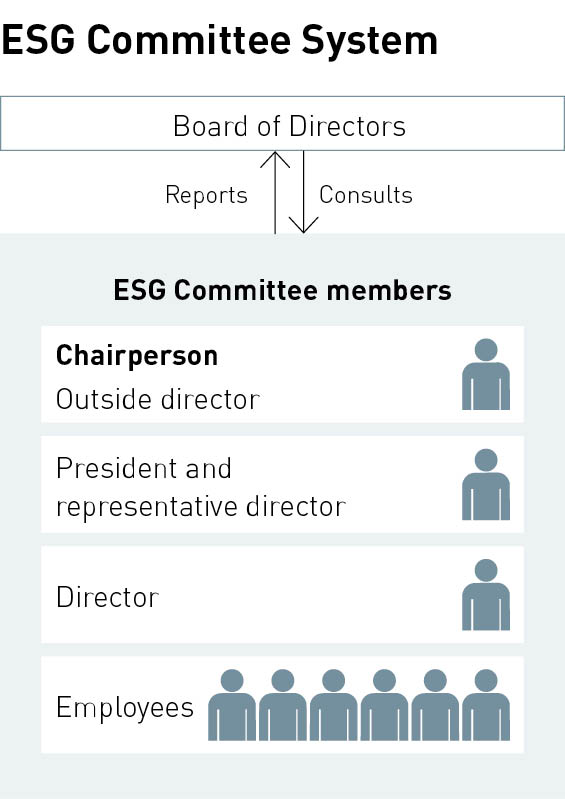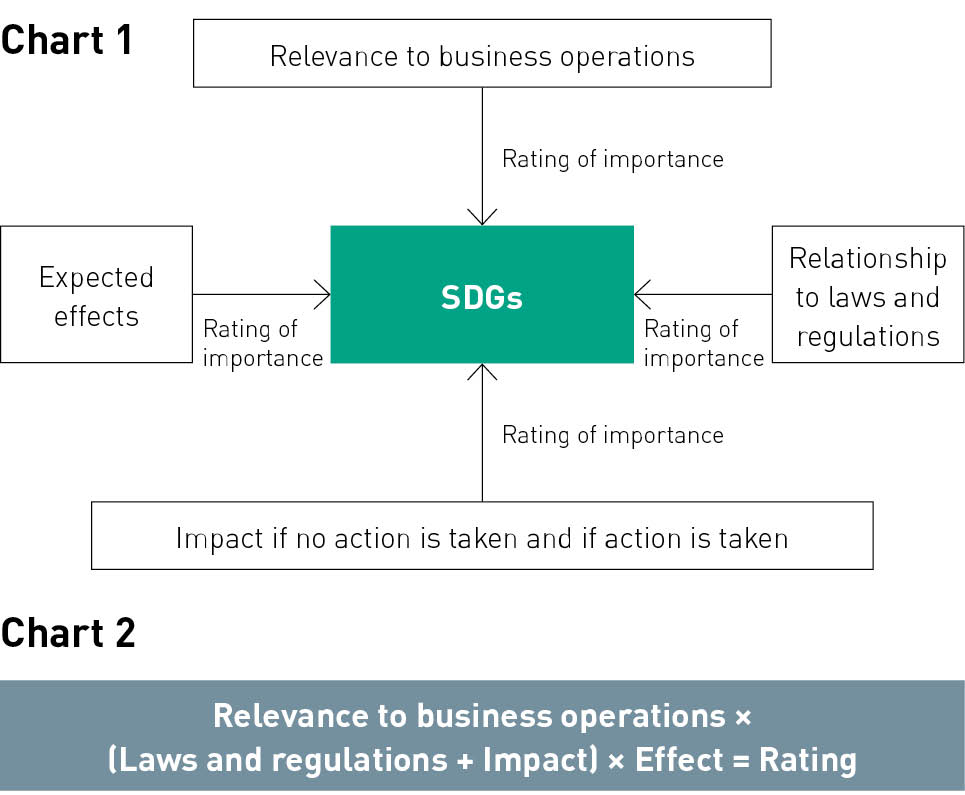ESG
ESG
Initiatives for the Environment, Society, and Corporate Governance
ESG Policy
- Contribute to our information-driven society by supplying parts for semiconductor and flat panel display production equipment.
- Aim to realize a sustainable society.
- Build on and improve the workplace environment to enable everyone to actively participate.
- Establish a robust management foundation.
Marumae’s Approach to Sustainability
A sustainable society is indispensable for ensuring business continuity and establishing a foundation for growth. Marumae has identified environmental, social, and governance (ESG) issues in relation to its business and is promoting initiatives pertaining to these issues with a view to improving its corporate value over the medium to long term. When identifying ESG issues, we continuously assess whether our actions are leading to corporate value improvement, giving considerable thought to how these issues affect our corporate value.
While it promotes such initiatives, Marumae expects that as the social climate changes, so too will its operating environment and the issues it faces. Accordingly, the Company will continue to monitor the external environment while remaining careful not to overlook internal issues. In this way, we will promote initiatives while making improvements to our business activities.
The ESG Committee
Identifying material issues in relation to ESG matters from a long-term perspective, the ESG Committee drafts key performance indicators (KPIs) and plans for solving these issues while serving as a body for monitoring initiatives. Following consultation from the Board of Directors, the committee was established as a subcommittee of the Board of Directors in September 2021. The committee’s role is to oversee whether initiatives for addressing ESG issues are leading to an improvement in corporate value and to report to the Board of Directors as necessary.
Comprising the president and representative director, one inside and one outside director, and six employees, the committee has in place a system that facilitates the deep involvement of directors.
The details of discussions at committee meetings are reported to the Board of Directors, the role of which is to oversee the progress of ESG plans and initiatives. Opinions offered by directors when such details are reported to the Board of Directors are shared with ESG Committee members, who conduct discussions at committee meetings as necessary.

Process for Identifying Key ESG Issues
In 2021, we began the process for identifying key ESG issues by assessing the degree of importance of the 17 goals and 169 targets of the United Nations Sustainable Development Goals from four perspectives (see chart 1). We used a formula (chart 2) to produce ratings for these perspectives and listed items with high ratings as important items.
Next, we identified key issues by carrying out repeated discussions referencing the standards of the Sustainability Accounting Standards Board’s evaluation criteria for the semiconductor industry and the standards of the Global Reporting Initiative.
Going forward, the ESG Committee will oversee initiatives for these key issues while reviewing them regularly, taking into account changes in society and the views of stakeholders.

Notice on ESG Data Disclosure
Marumae discloses ESG-related figures on its website to help stakeholders gain a deeper understanding of the Company. Quantifying ESG elements allows us to understand current conditions quantitatively and to discover and analyze the issues we face. We link the results of our analysis to long-term corporate value improvement.
Key ESG Issues and Achievement Targets
Realization of a Sustainable Society
| 2030 | Reduce CO2 emissions per marginal profit by 50% or more compared with fiscal 2021 by 2030 by generating renewable energy to curb electricity consumption |
|---|---|
| Started in 2021 |
Declare support for the recommendations of the TCFD and implement information disclosure based on its framework |
| 2030 | Reduce the volume of cutting fluid waste by 40% compared with fiscal 2021 |
| 2030 | Reduce the percentage of the marginal profit ratio accounted for by packaging materials by 10% compared with fiscal 2021 |
| 2030 | Reduce the percentage of the marginal profit ratio accounted for by costs arising from remanufacturing due to defects by 40% compared with fiscal 2021 |



Product competitiveness
| 2030 | Improve both prototype production and programming capabilities Train 100 programmers |
|---|---|
| 2022 | Improve ROIC Achieve asset-based ROIC of 18% Achieve liability-based ROIC of 14% |


Increase in productivity
| 2022 | Achieve marginal profit per employee of ¥20.0 million by fiscal 2022 |
|---|


Technological innovation
| 2022 | Promote digital transformation Implement complete operation of schedulers |
|---|

Development of human resources
| 2025 | Establish a team dedicated to developing human resources (create a personnel section) |
|---|---|
| 2025 | Prepare and implement a human resource development plan and increase investment in training per employee |

People and the workplace
| 2025 | Achieve a rate of parental leave by female employees of more than 75% Attain a rate of parental leave and parental-related annual paid leave by male employees of more than 30% |
|---|---|
| 2025 | Encourage diversity (recruit minorities, LGBTQ individuals, and other socially disadvantaged individuals, foster understanding of diversity, create friendly work environments, and offer platforms where everyone can thrive) |
| 2030 | Promote the active participation of women (increase the percentage of female employees and women in management positions) |
| 2023 | Achieve a 3% employment ratio of people who have disabilities |
| 2023 | Ensure a 100% participation rate in safety training |


Corporate governance
| 2023 | Promote diversity in the Board of Directors |
|---|---|
| 2022 | Boost the ratio of outside directors |
| 2022 | Establish a remuneration system for directors that functions as an incentive |


Others
| 2030 | Promote research and development related to physical rehabilitation equipment |
|---|




